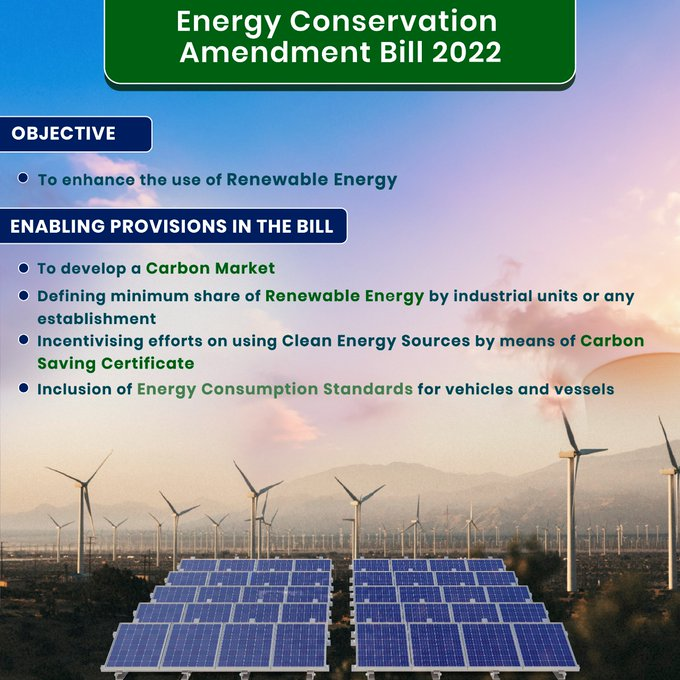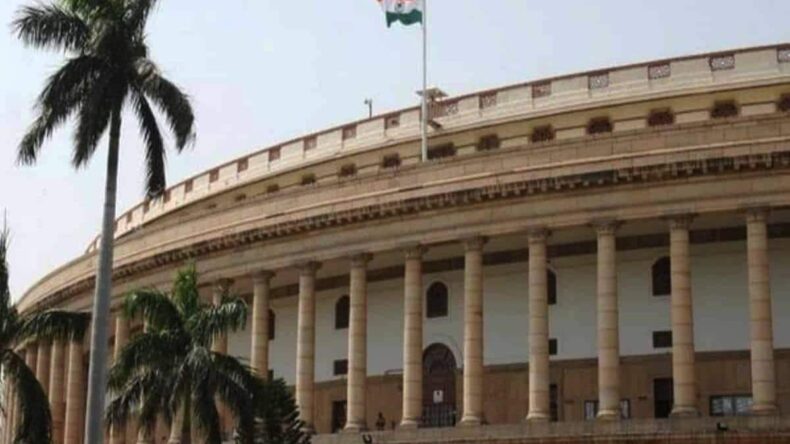
On Monday, 12th December, the Parliament passed the Energy Conservation (Amendment) Bill, 2022 that targets to mandate the use of green energy and allows the government to set up a carbon trading scheme.
This is a huge step taken by India in the direction of achieving the set SDG target of carbon reduction by 45% by 2030. The bill will ensure that the big power consumers meet part of their energy needs through renewable energy sources decreasing the dependency on traditional sources, that is, fossil fuel energy.
The bill was passed in the Lok Sabha on 8th August this year, and only got approval from Rajya Sabha this Monday. Power minister mentioned in the Rajya Sabha while talking about the bill that the need to save our planet is the only one we have. He said there is no other alternative and so, this bill has brought us one more step towards the concrete action that our country has taken.
In the future, the government plans to make green hydrogen mandatory in a few sectors like steel, refineries, fertilizer, and cement industries, through a green hydrogen consumption obligation which will be set by a body led by the cabinet secretary.

What are the key features of the bill?
Use of non-fossil-based energy
The main objective of the bill is to enhance the use of renewable energy such as wind, solar, hydro, thermal, nuclear, etc. including biomass and ethanol, for energy and feedstock, also with the use of green hydrogen and green ammonia.
Development of a Carbon Market and incentivizing efforts through Carbon Saving Certificates
When the Kyoto Protocol was signed in 1997, carbon was recognized as a tradable good. 1 carbon credit permits the owner of a factory or business to emit 1 tonne of carbon dioxide or GHG. Carbon trade now allows countries to emit a certain amount of GHGs in exchange for investing in environmental-friendly initiatives. India has made major investments in producing carbon credits and exporting them to international enterprises in order to offset its emissions.
Now India intends to forbid its exports, guarantee the expansion of the local domestic market for carbon credits and increase its internal trade. In the same light, this bill will help to reduce emissions by 45% by generating 50% of power from renewable energy and reaching net zero emissions by 2070. The carbon trade certificate is encouraging businesses and nations to spend on eco-friendly projects.
Energy Conservation and Sustainable Building Code (ECBC)
The bill also proposes an ECBC for large buildings (connected to at least 100 KW of power) including commercial and residential ones, which makes it mandatory for renewable energy sources to be used in such buildings as well. There shall also be an increase in the number of members in the Governing Council of the Bureau of Energy Efficiency, a statutory body constituted under the Ministry of Power.
“Carbon pricing as an instrument will be deeply critical for India to achieve its net-zero target and this has been a strong and ambitious move by the Government of India,” said Vaibhav Chaturvedi, Fellow, the council on Energy, Environment and Water (CEEW). He said that CEEW’s industry engagement shows that India’s industry stakeholders do not have in-depth experience with the cap and trade market. The next step should be to train industry participants on the working aspects of the market to ensure the success of this intervention and institutionalize it in the Indian ecosystem.
Some raised their eyebrows regarding the carbon trading scheme working under the power ministry and not the environment ministry. There is also a lack of better infrastructure to both regulate and implement the carbon credit system. Some also felt betrayed because the Centre took away the rights of the States, as only 5 representatives are proposed by the Bill and the hence majority of the States would not be able to file their opinion in the Bureau of Energy Efficiency.
READ MORE:
https://tdznkwjt9mxt6p1p8657.cleaver.live/who-chief-to-asks-china-for-requested-data/













